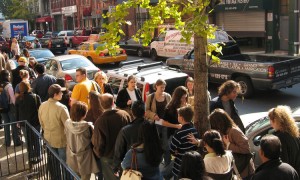There’s no point in beating about the bush: NYC housing is some of the most expensive on the planet. If you’ve got hefty financial support or a high-paying job, or you’ve lucked into a rent-controlled apartment, the city’s prices may not faze you. If, on the other hand, you’ve got a leaner pocketbook or need to include things like school fees in your monthly budget, you may be worried about how — or even if — you’ll be able to live in NYC long-term.
When you’re trying to make these kinds of decisions, keep in mind: There are several programs that have been started by the city that are intended to help city residents of limited means obtain affordable housing in great neighborhoods. One of these programs is the city’s inclusionary housing program.
What Is Inclusionary Housing?
NYC’s inclusionary housing program was created to help ensure economic diversity in key areas throughout the city. In areas primed for residential growth, developers are offered something called a “floor area bonus” if they agree to preserve existing low-income housing or if they include low-income units in their new builds. The affordable housing must either be located on-site within the new development or off-site but within half a mile of the new build, and the units need to remain permanently affordable. The units can be either offered as rentals or as units available for sale. There are two types of inclusionary housing programs developers can get involved in: the R10 program and the designated areas program.
The R10 Program
The R10 program, created in 1987, applies to areas of the city with high residential density. Portions of Fifth and Park Avenues in Manhattan, in addition to sections of Long Island City and Downtown Brooklyn, fall under R10 designation. With this program, developers get a floor area bonus, meaning they get to add additional square footage up to but not exceeding 20 percent of the allowed residential floor area for the building.
Designated Areas Program
With the designated areas program, created in 2005, developers create and/or preserve affordable housing in high- and medium-density neighborhoods throughout the city. The developers get floor bonuses that give them as much as an additional 33 percent of floor space if they earmark at least 20 percent of their floor space for affordable housing. Recently, the city’s Department of Housing Preservation and Development (HPD) created a unit called Neighborhood Strategies. It’s charged with overseeing mandatory inclusionary housing initiatives that Mayor Bill de Blasio is dedicatated to pushing through.
Where Do I Sign Up?
You probably don’t need a master’s degree in urban planning from Columbia University’s Graduate School of Architecture, Planning and Preservation to figure out that competition for these and other affordable housing programs is intense. You know how hard it is to get into Harvard? Just try applying for New York’s affordable housing, as you’re trying to stand out from thousands other applicants. Preference tends to be given to people who live in the areas where the developers are building.
Get On the List
Visit the HPD’s website to find out which buildings are being offered at any given time. Once you’ve seen the list of what’s available, you’ll need to reach out to people like local real estate agents and/or building managers in your area to find out about the application process in the areas that you’re interested in. If you meet the strict income and credit requirements, you may be eligible to apply. Pay close attention to the rules; one mistake could have your application rejected.
Image Source: Flickr/Ed Yourdon
[cf]skyword_tracking_tag[/cf]






